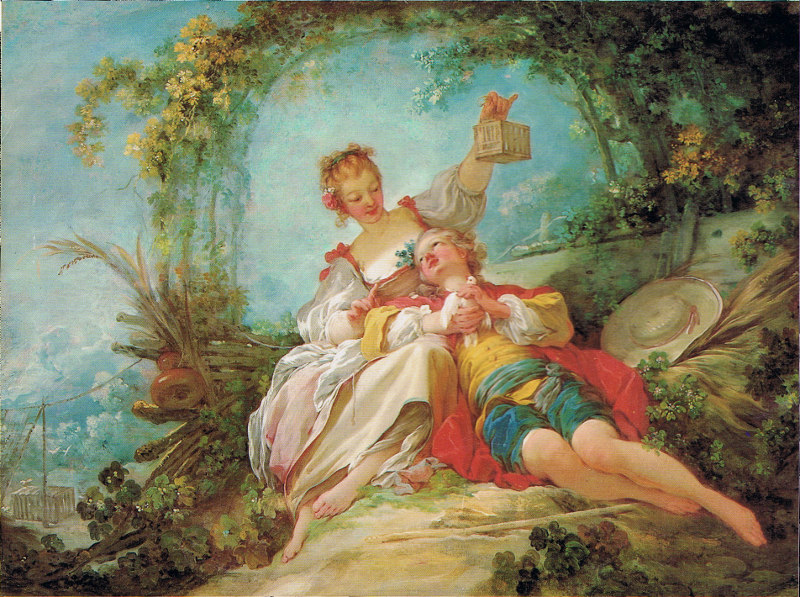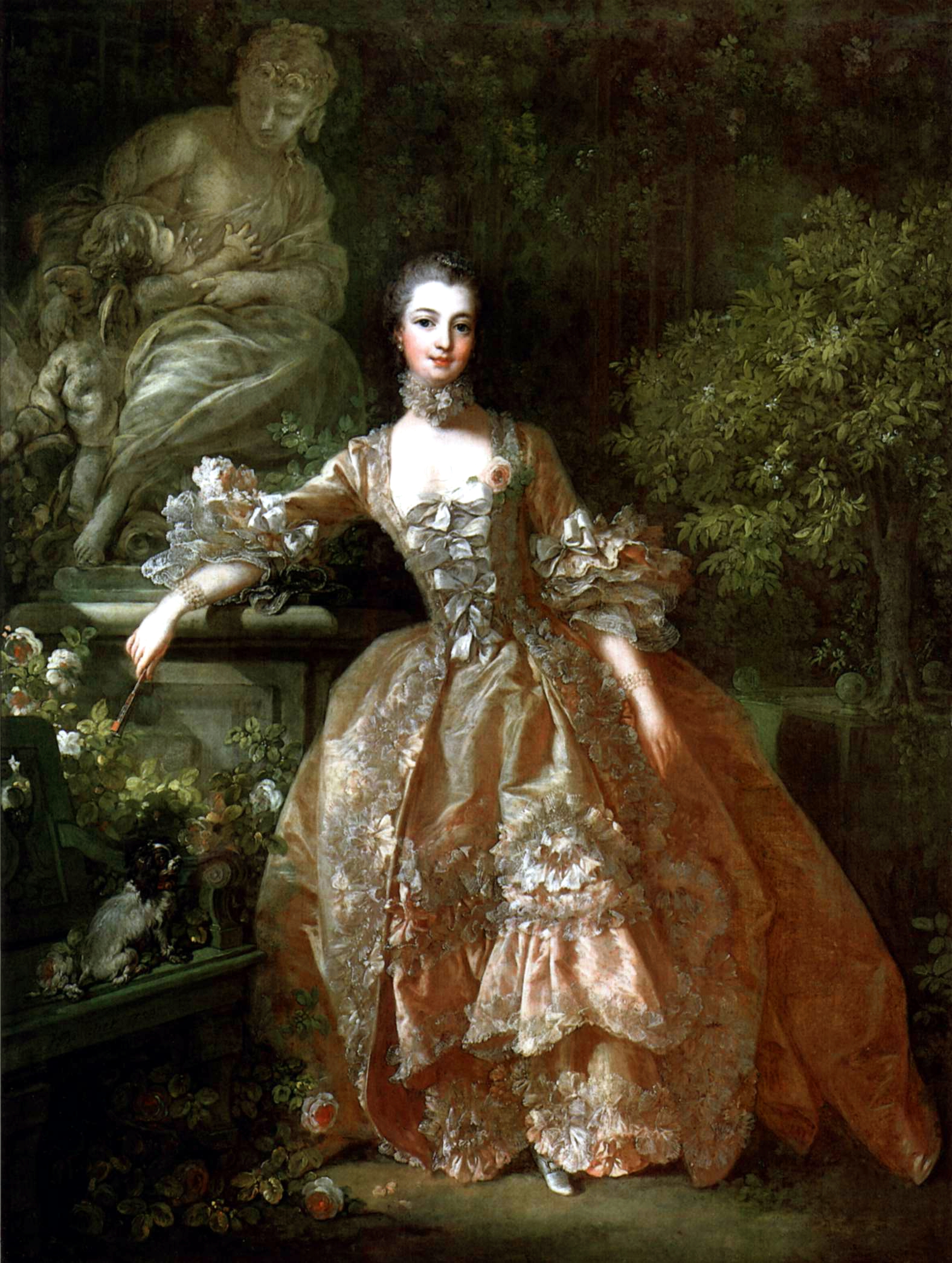In painting, the Rococo visual style was very bright and the colours were quite delicate and not harsh or bold. Landscapes were the most common subject of the century and artists like Fragonard painted landscapes in paintings associated with love and romance.
happy lovers - Fragonard

Madame de Pompadour was the mistress of king Louis XV. She was a woman with a lot of influence and power in France in the 18th century and she commissioned many artworks. Rococo quickly developed as lots of money was invested in artists' paintings and sculptures.
Francois Boucher - madame de pompadour

Madame de Pompadour had her own image which was highlighted in her commissioned paintings. She always held a rose in hand which resembled peak of physical beauty and perfection. The open flower also had a metaphor of sexual maturity.
all good things come together -
Madame de Pompadour at her Toilette -

Later on in her life, artists started producing works which mocked Madame de Pompadour.
Chinoiserie was a visual language that appeared later on. It was a style that was influenced by Rococo and art of China. European artists made copies of Chinese artists' work and the European reproductions often presented Chinese culture stereotypes.
.jpg)
No comments:
Post a Comment